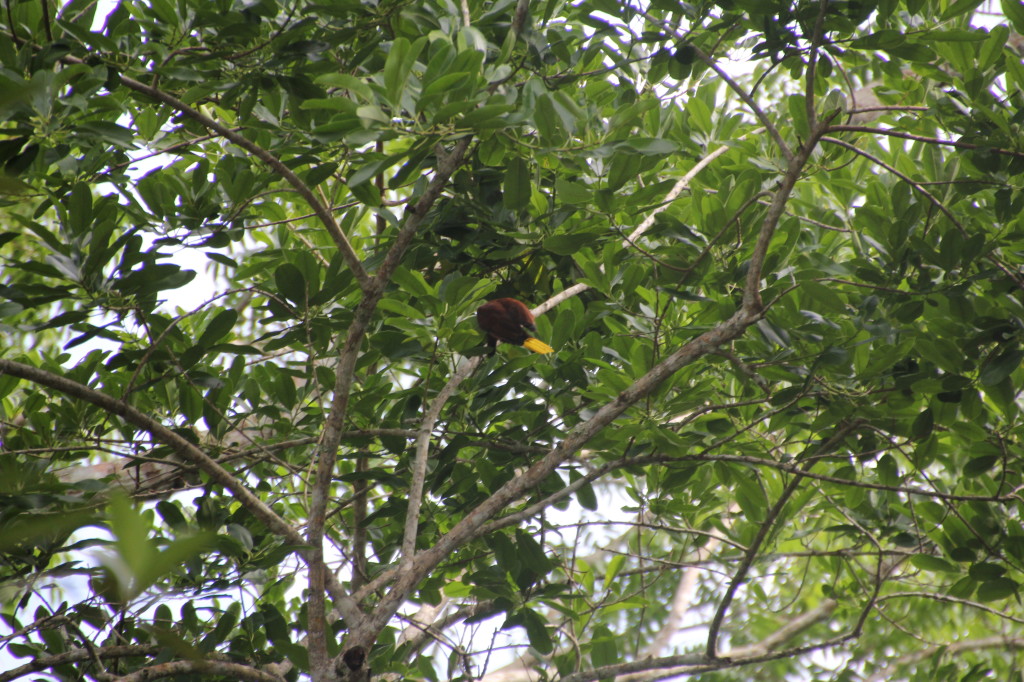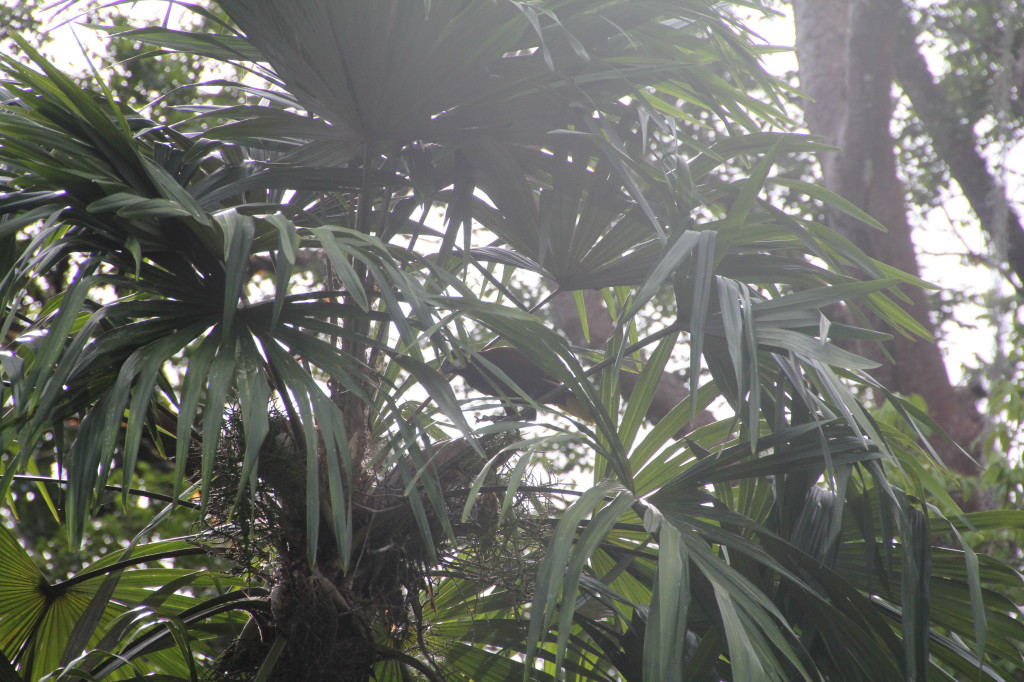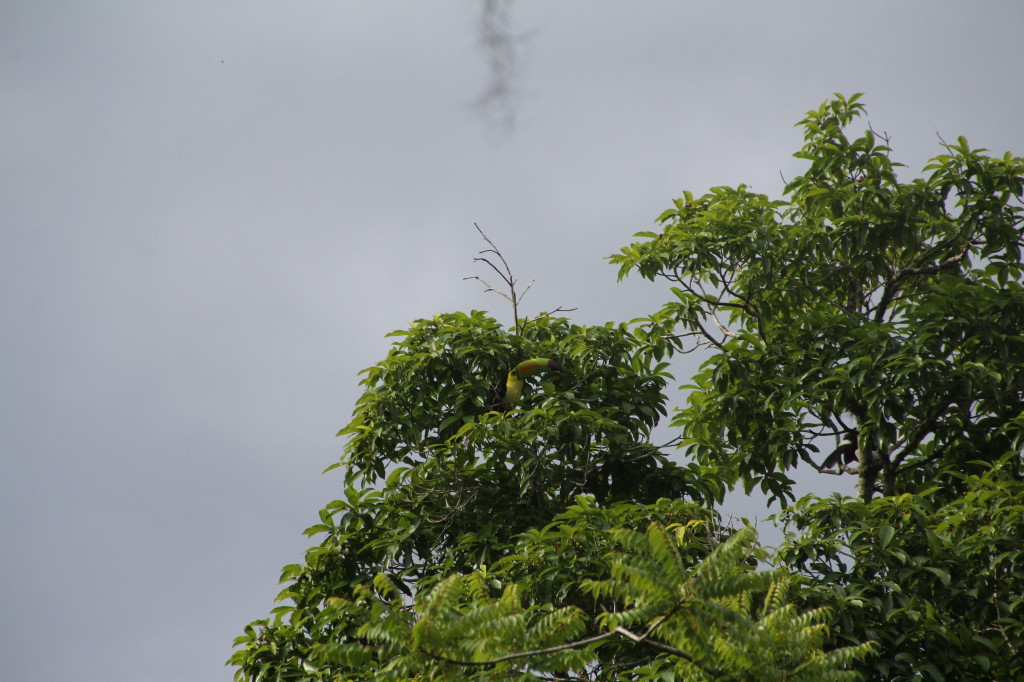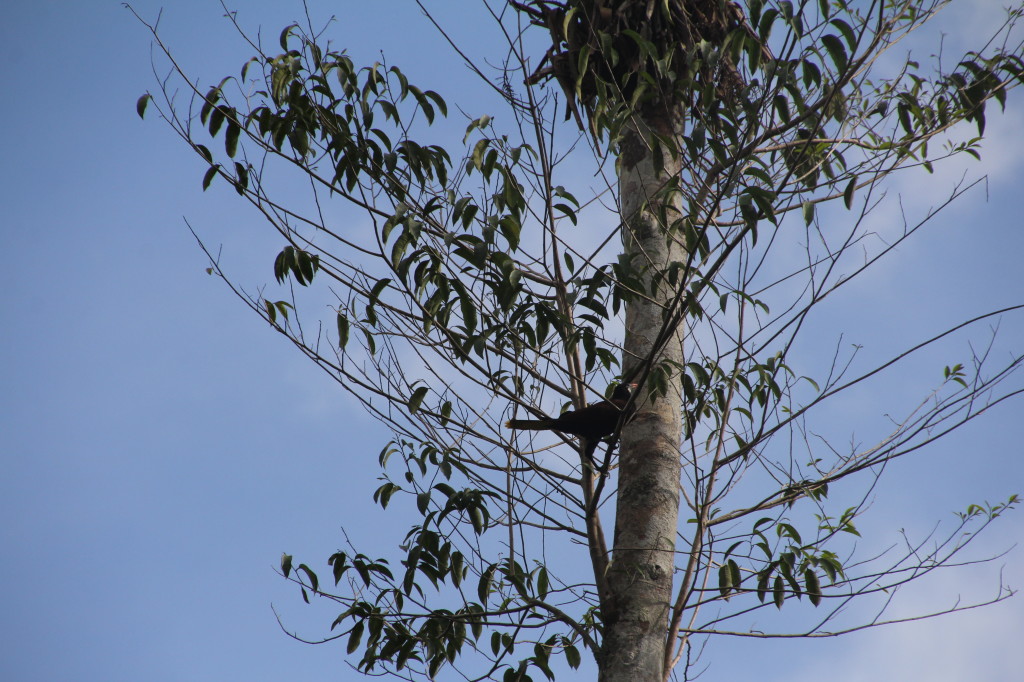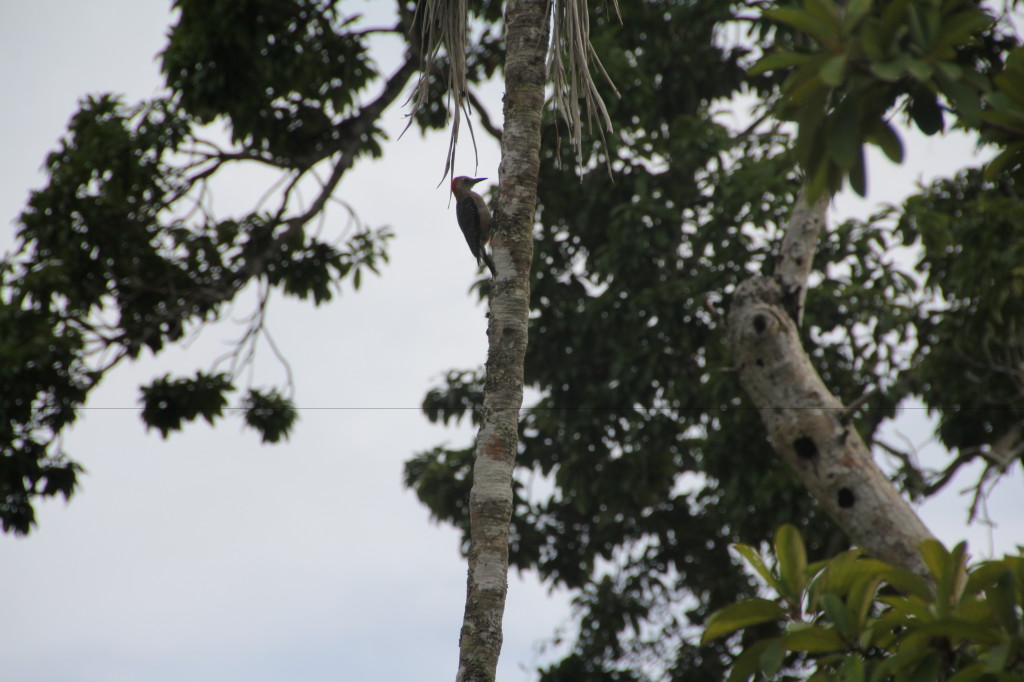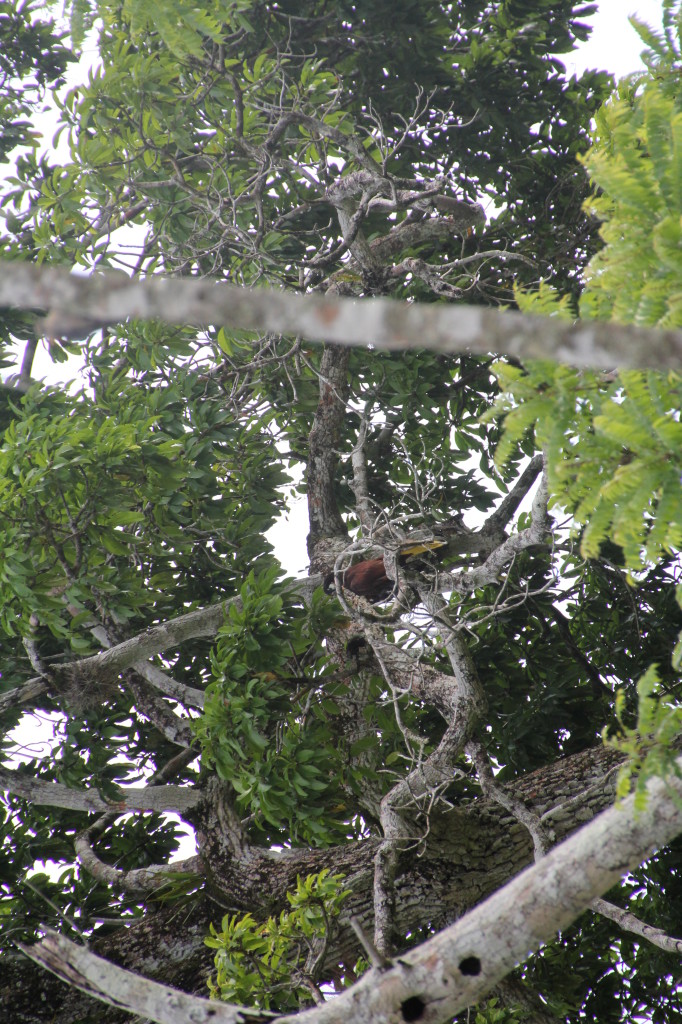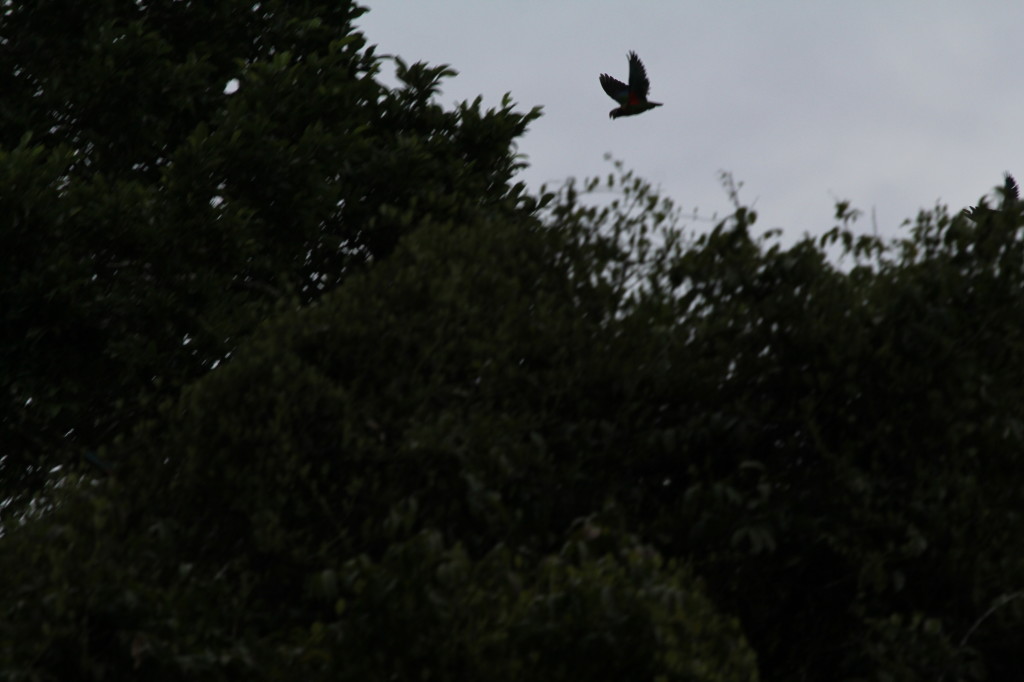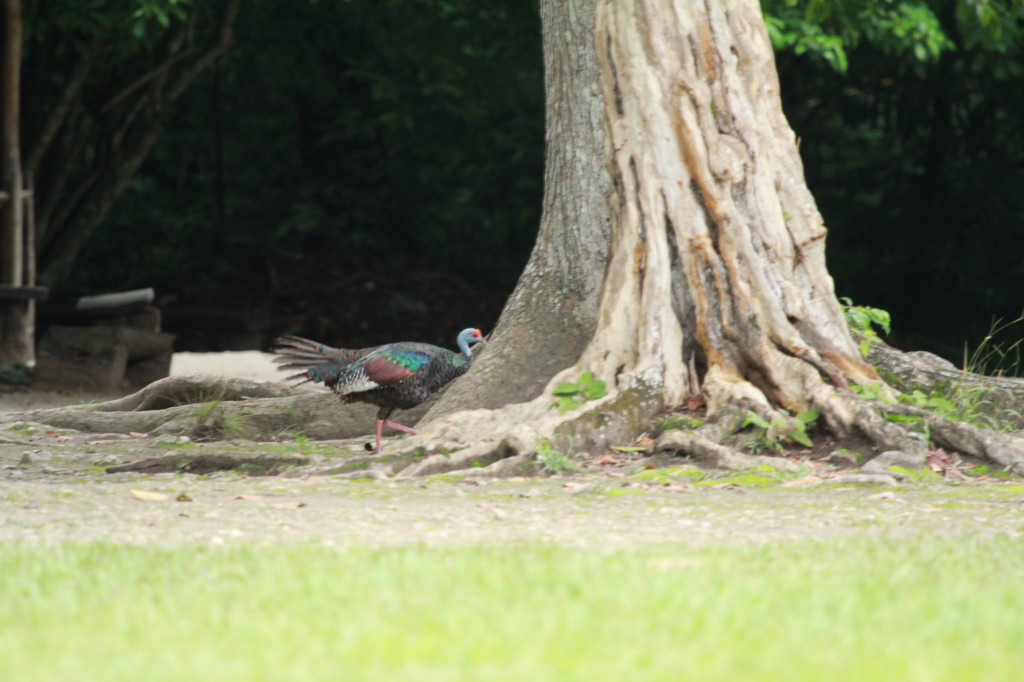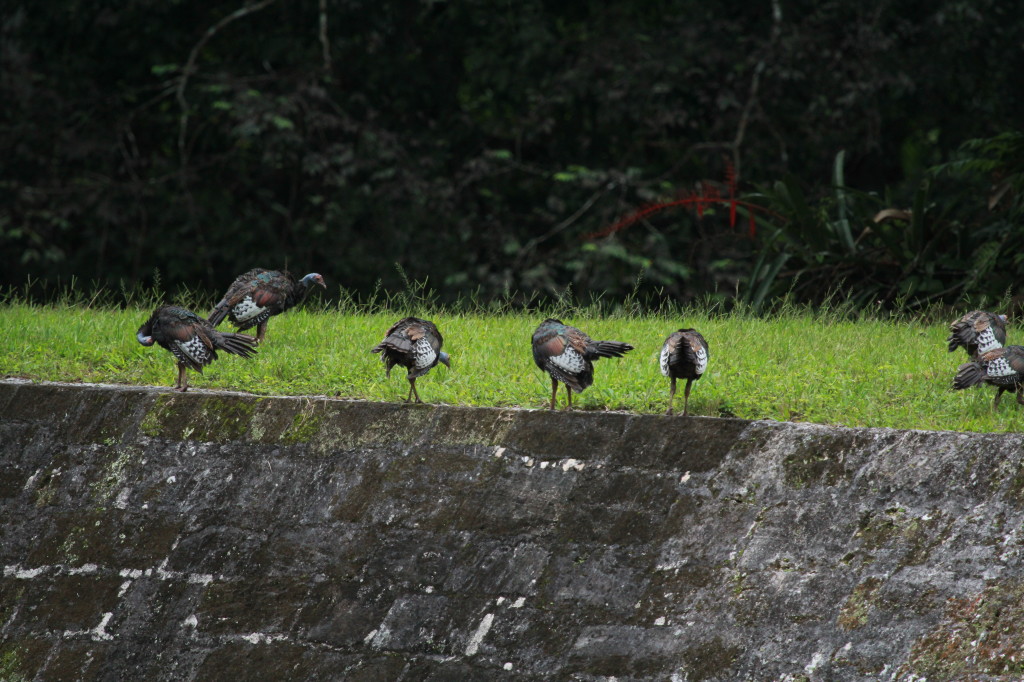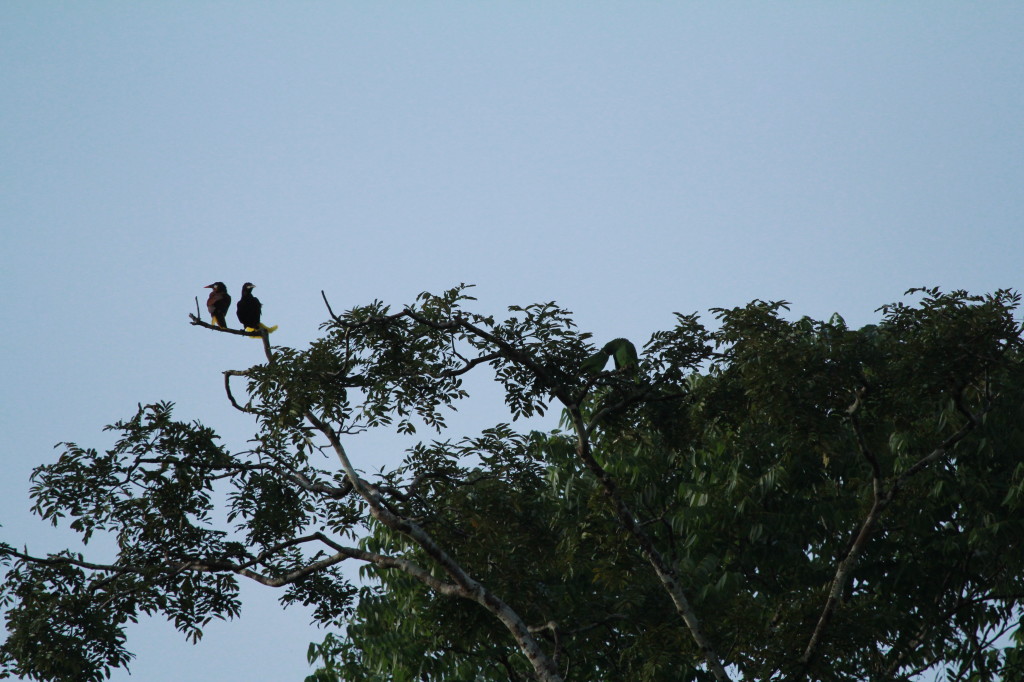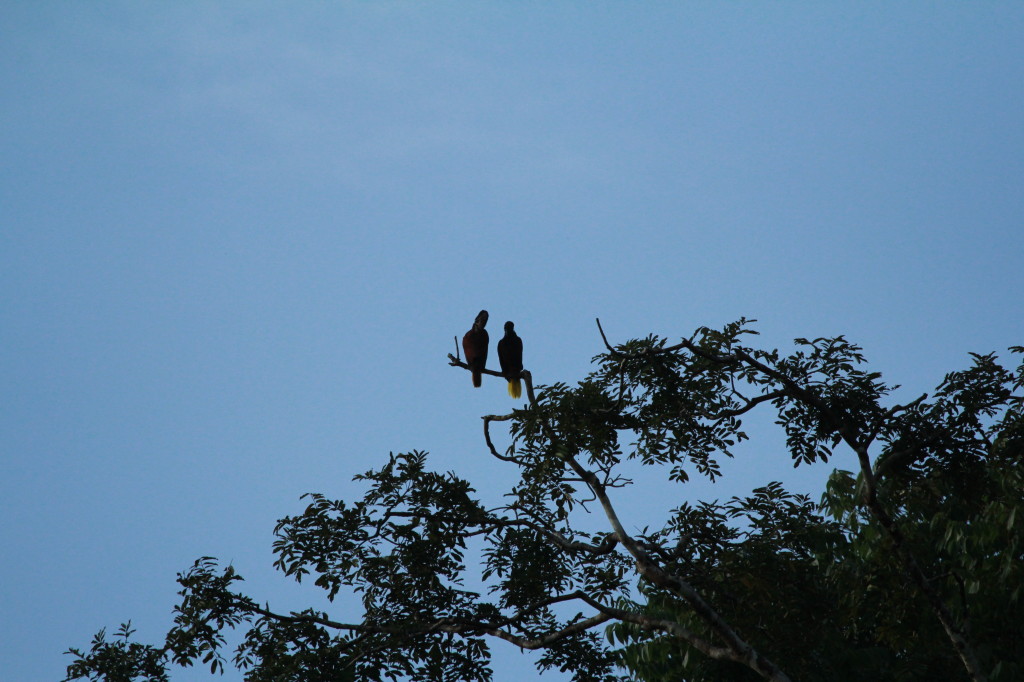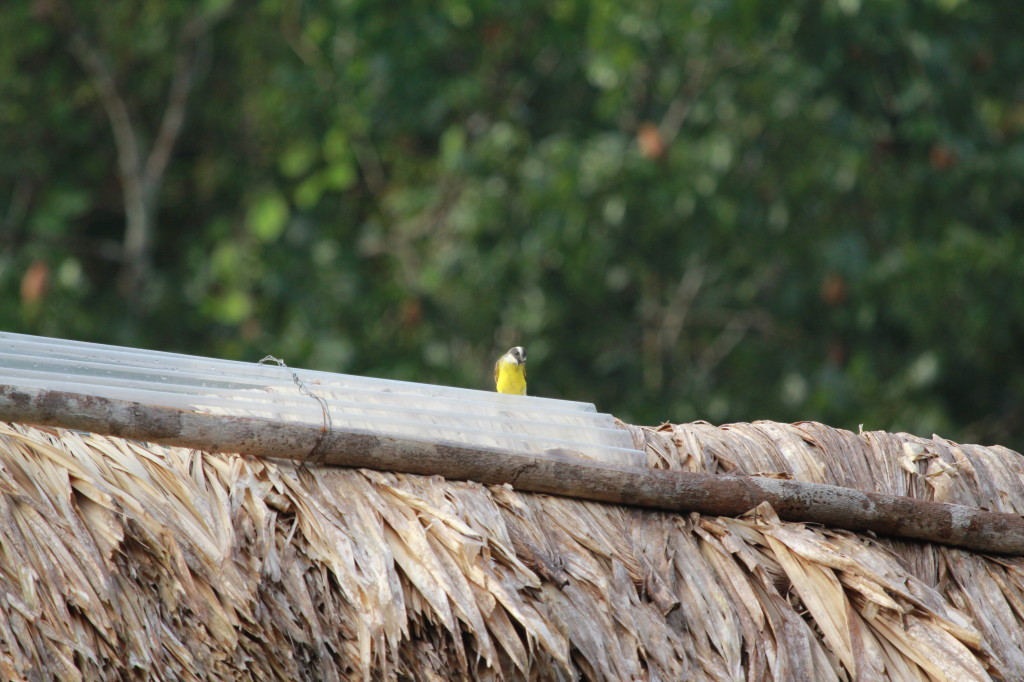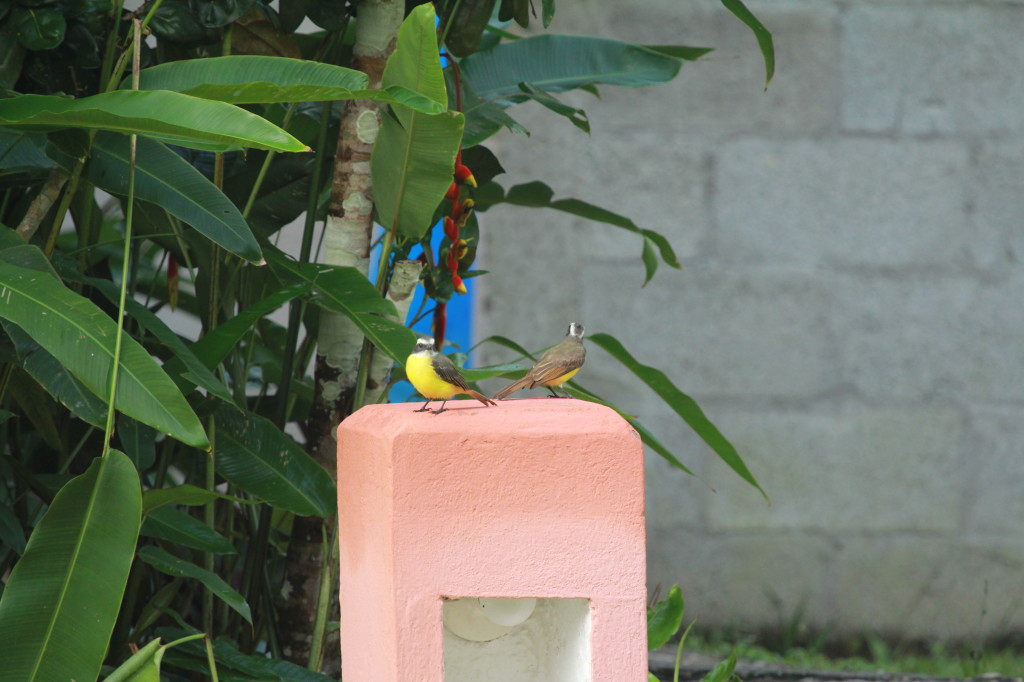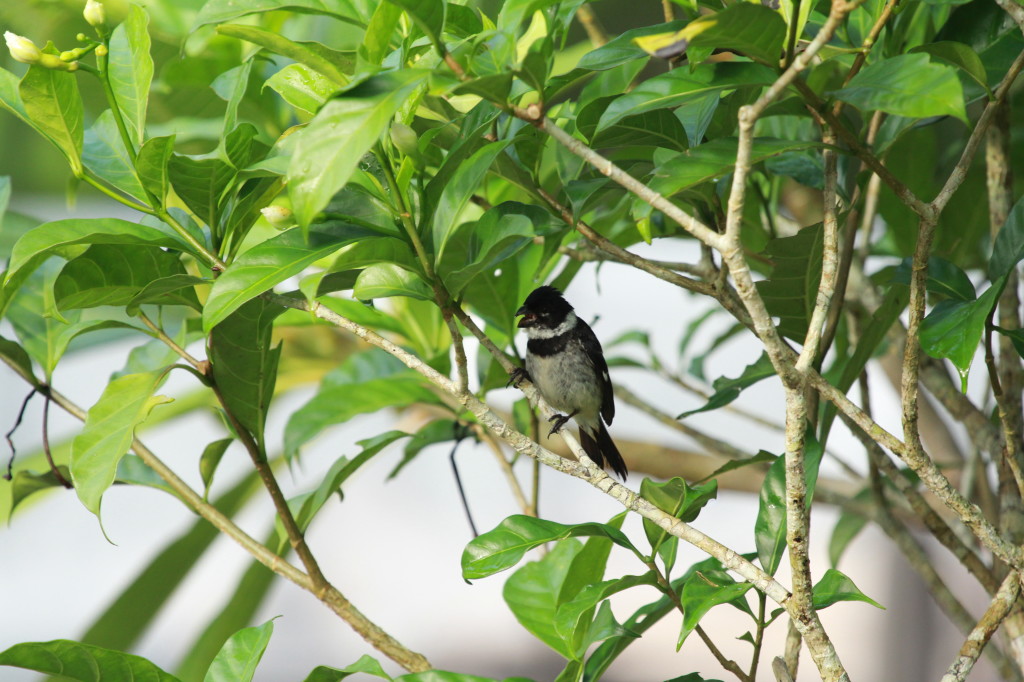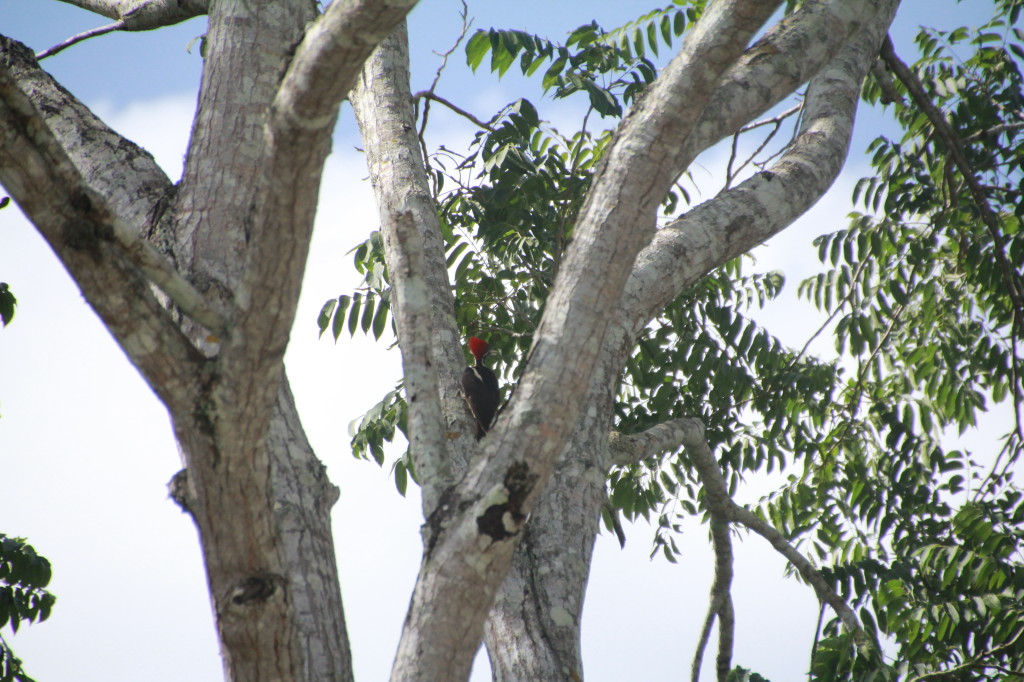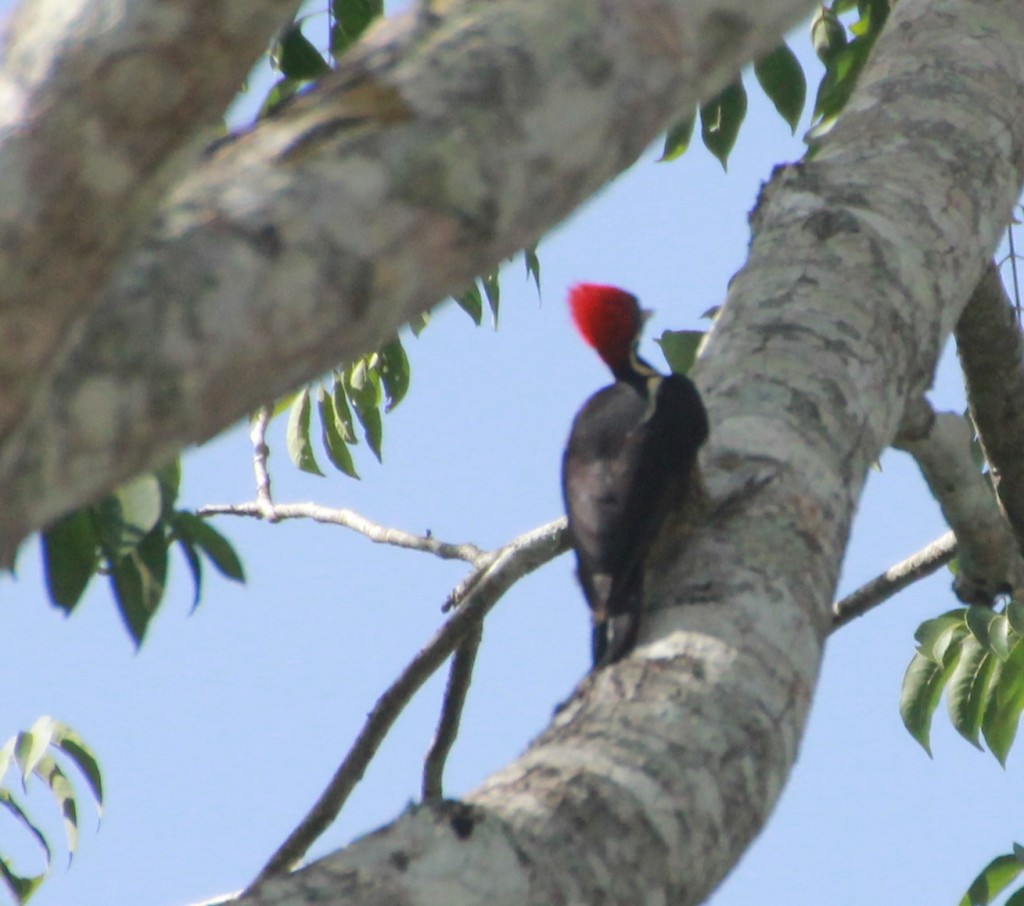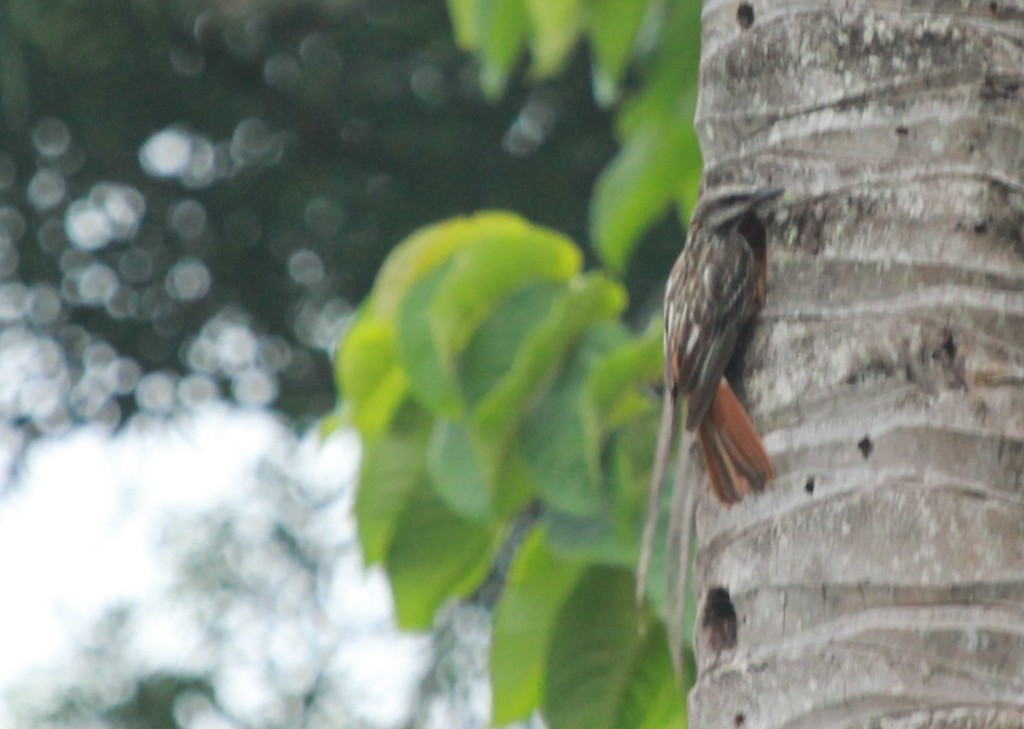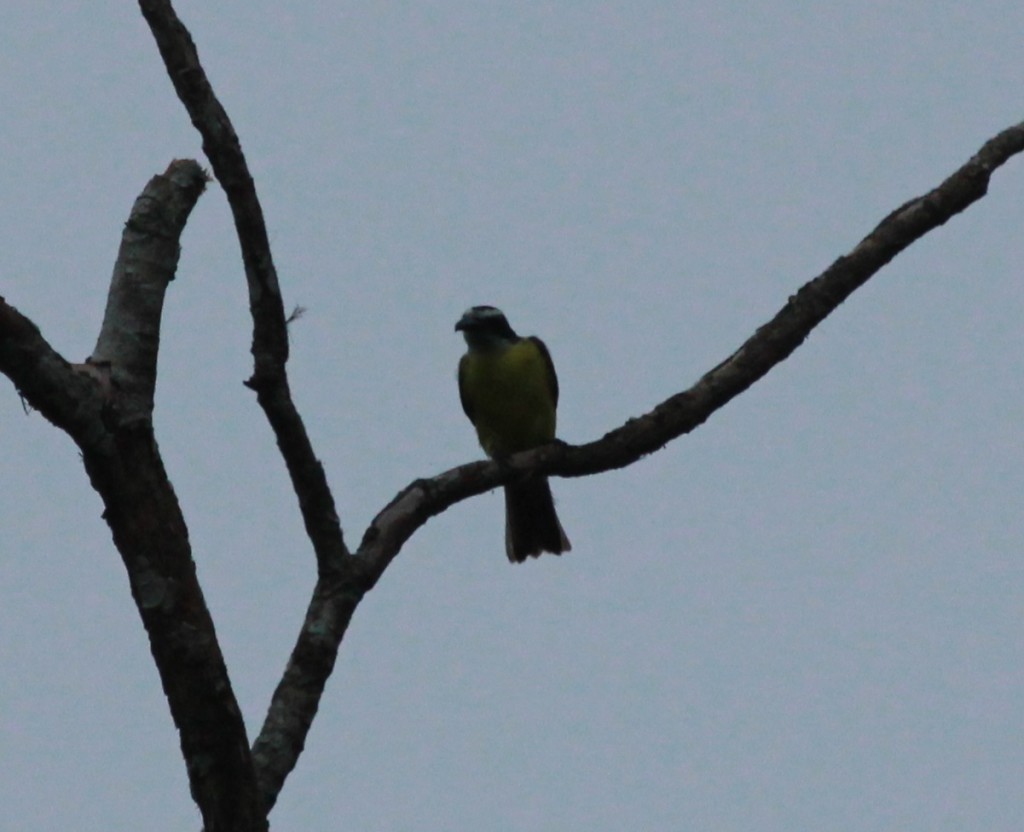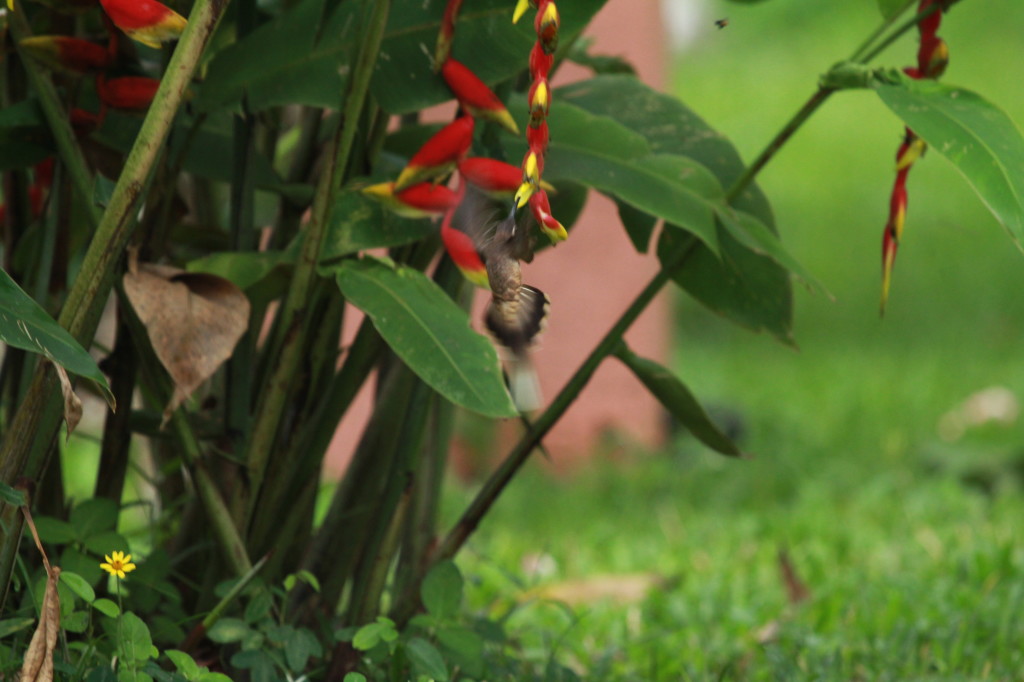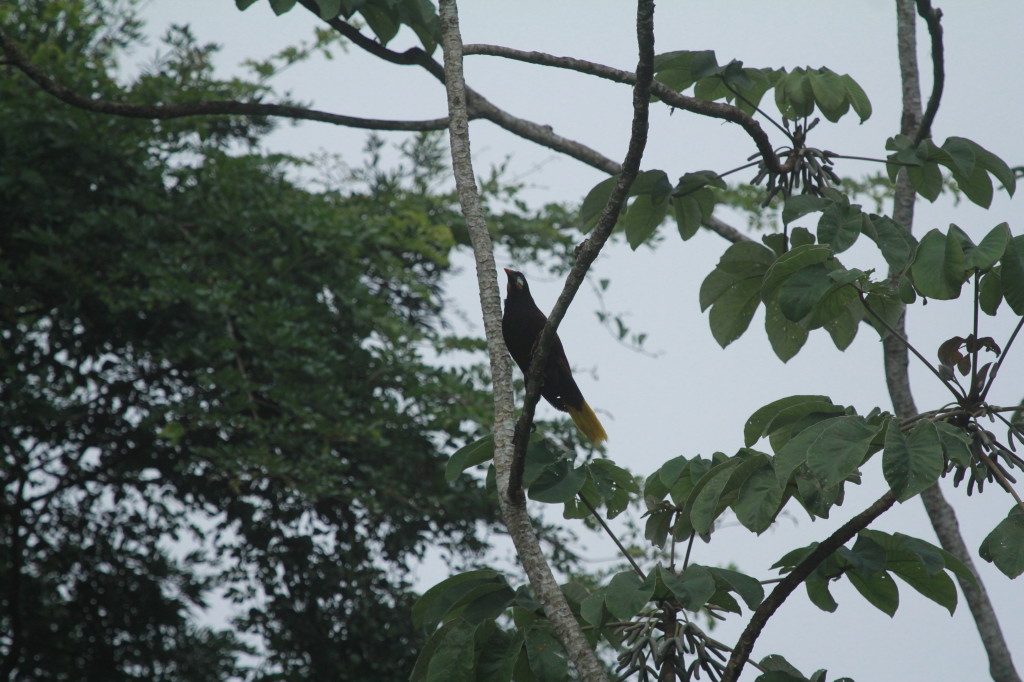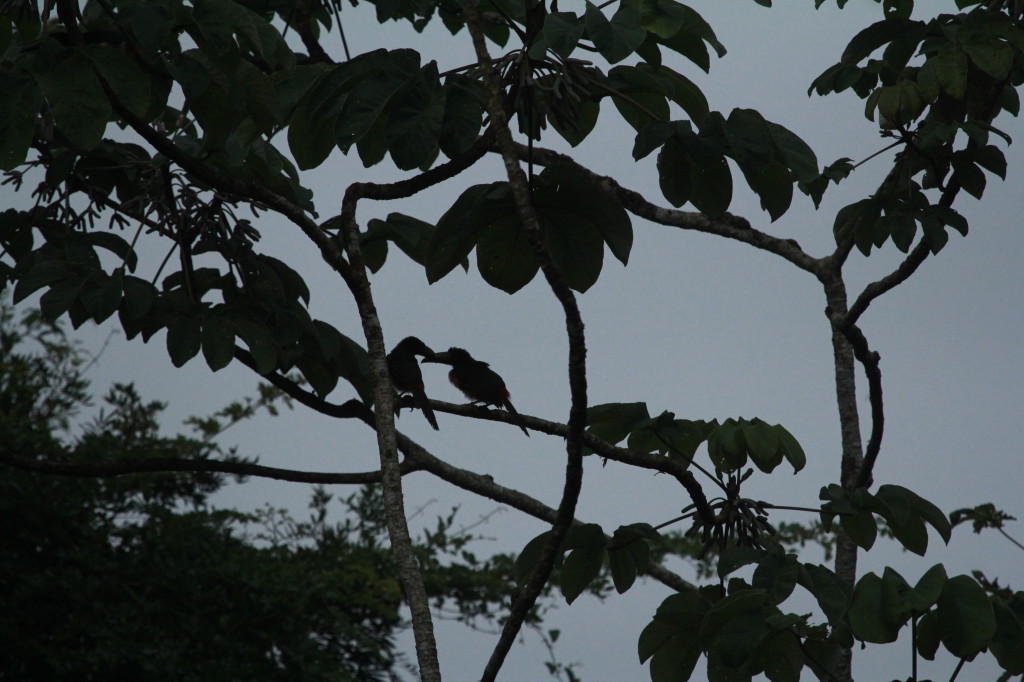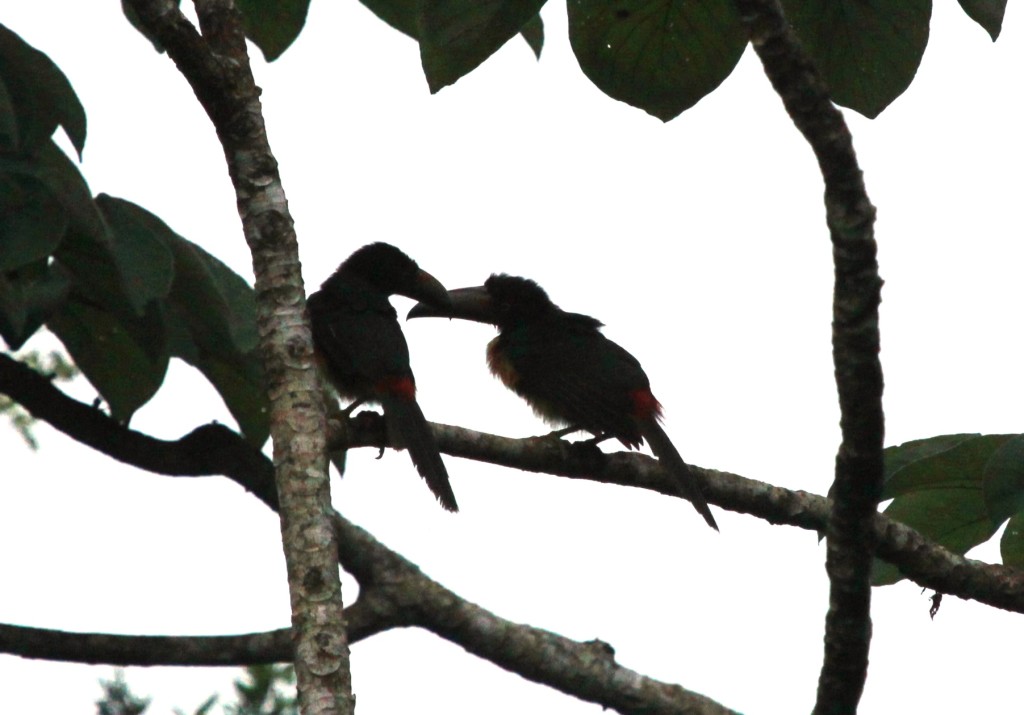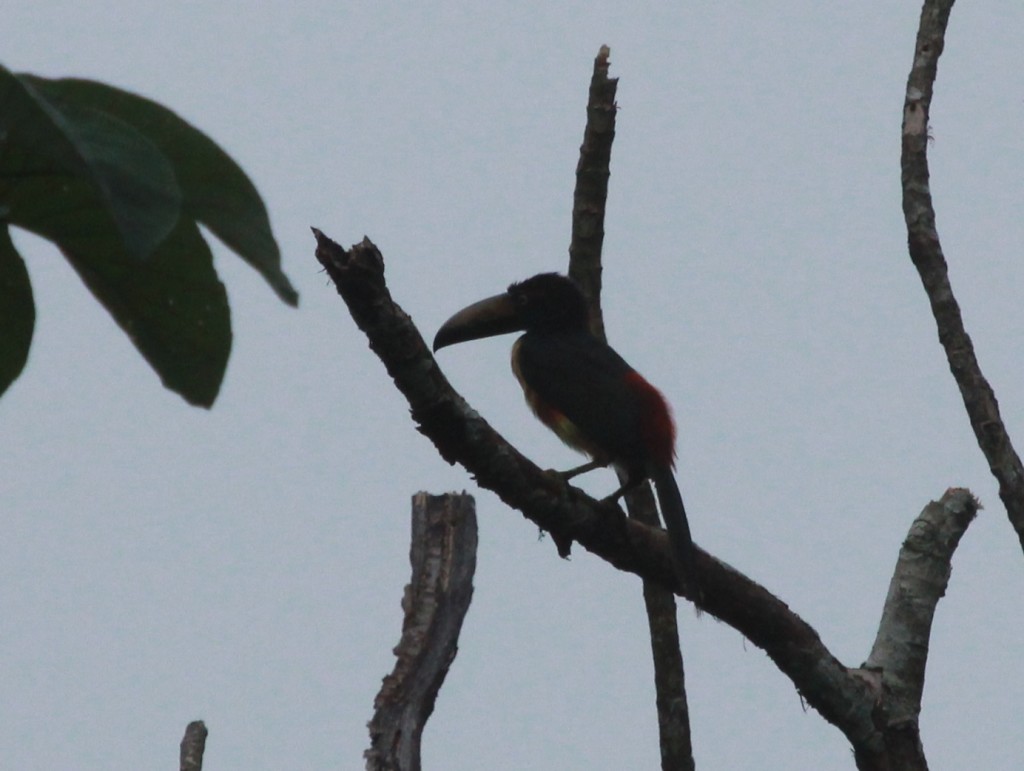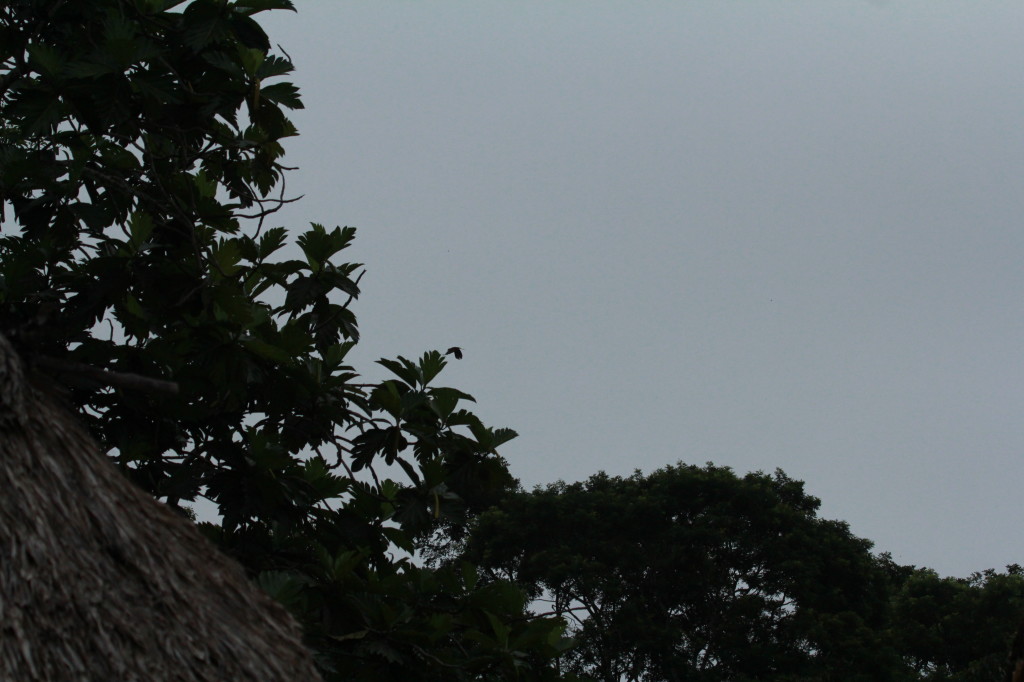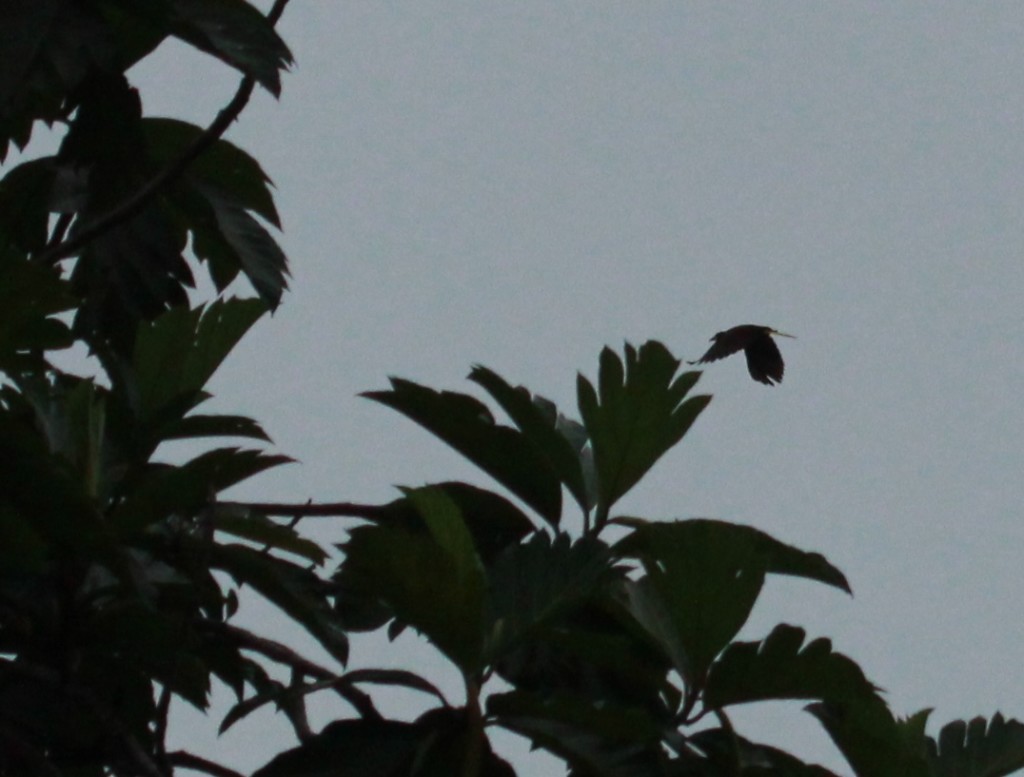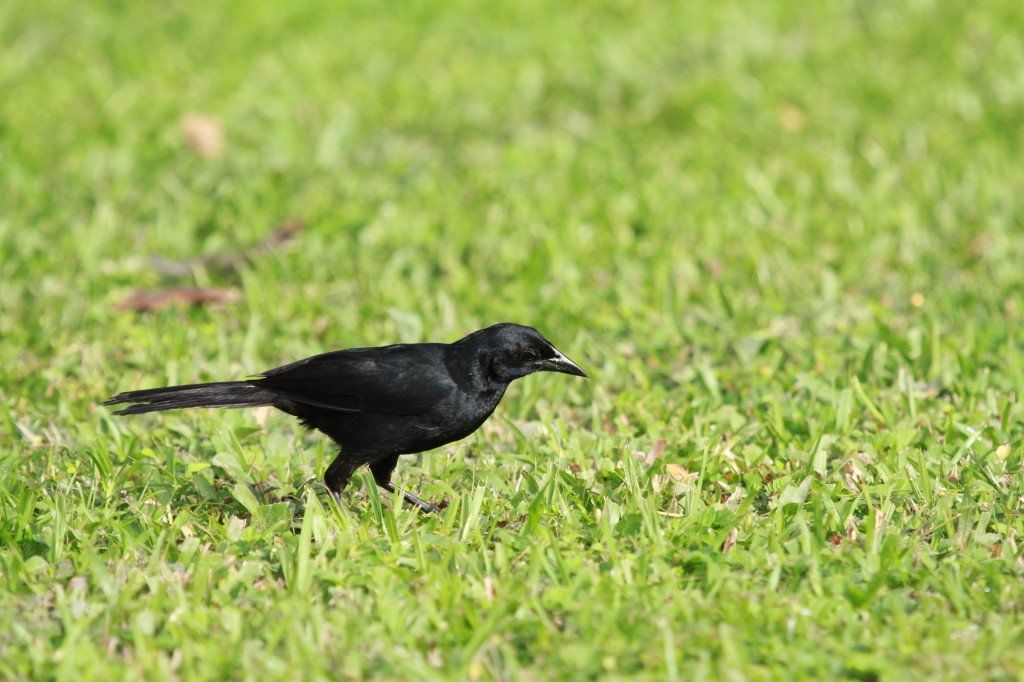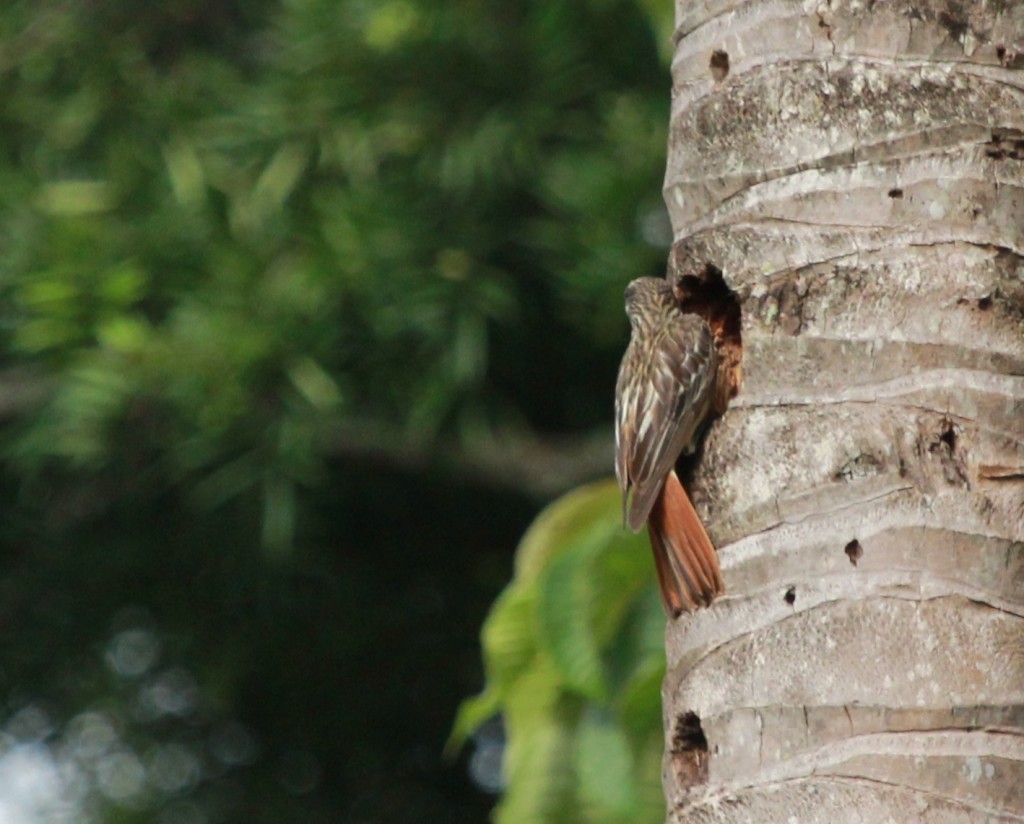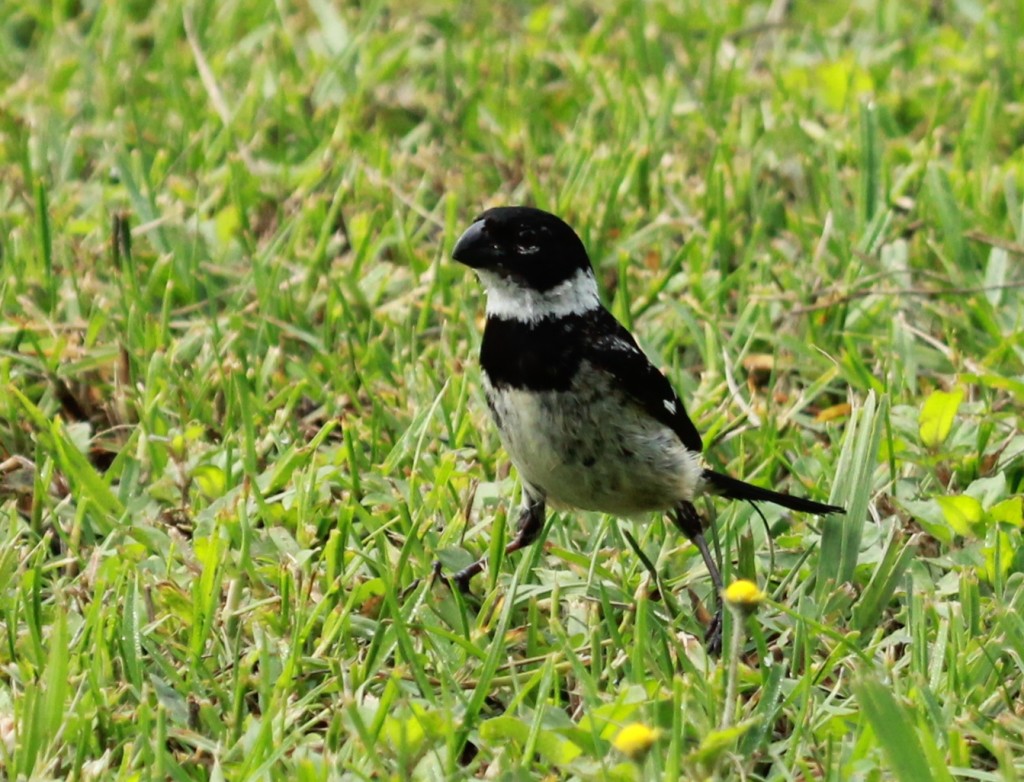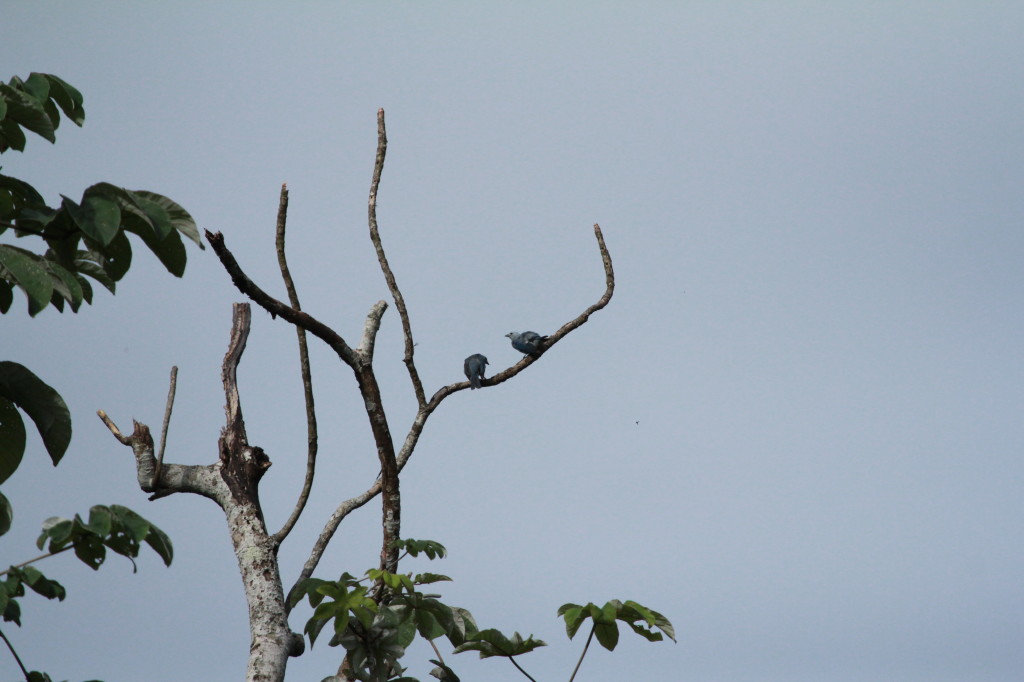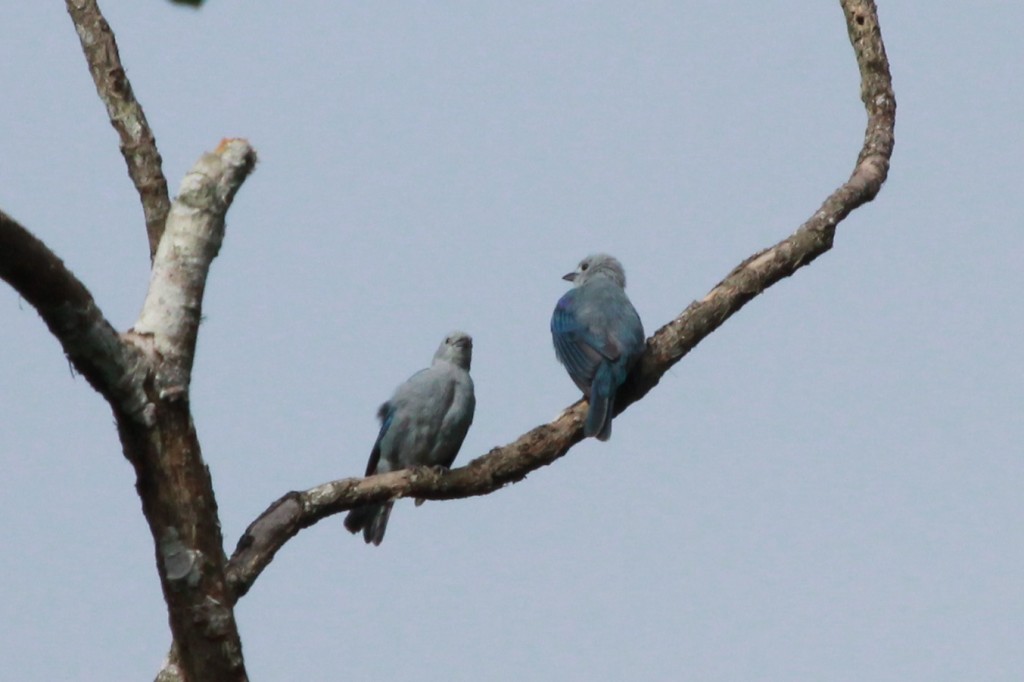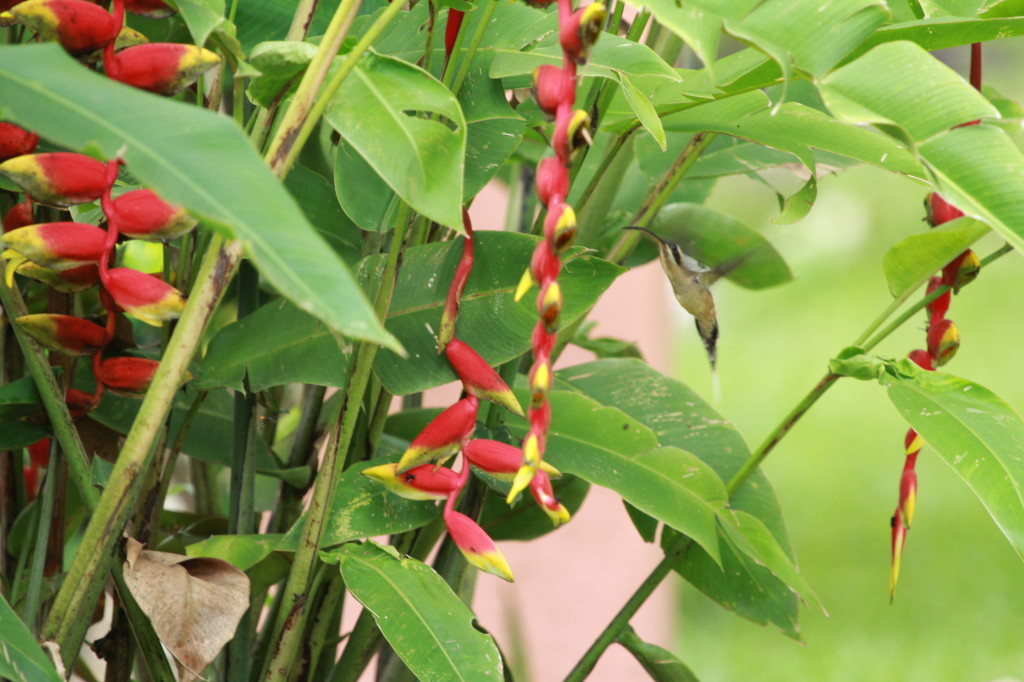The White-fronted Amazon (Amazona albifrons) also known as the White-fronted Parrot, or adopted slang term Spectacled Amazon is found throughout most of Central America.
.
We saw them in Belize at Belize Bird Rescue, Tikal National Park and Laguna del Lagarto in Costa Rica.
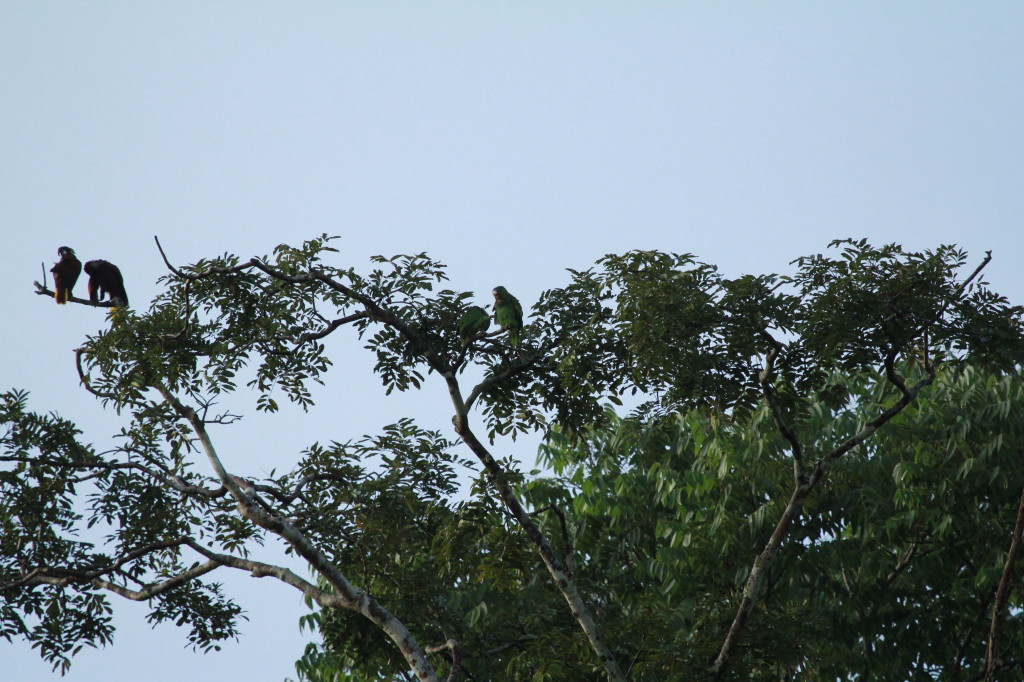
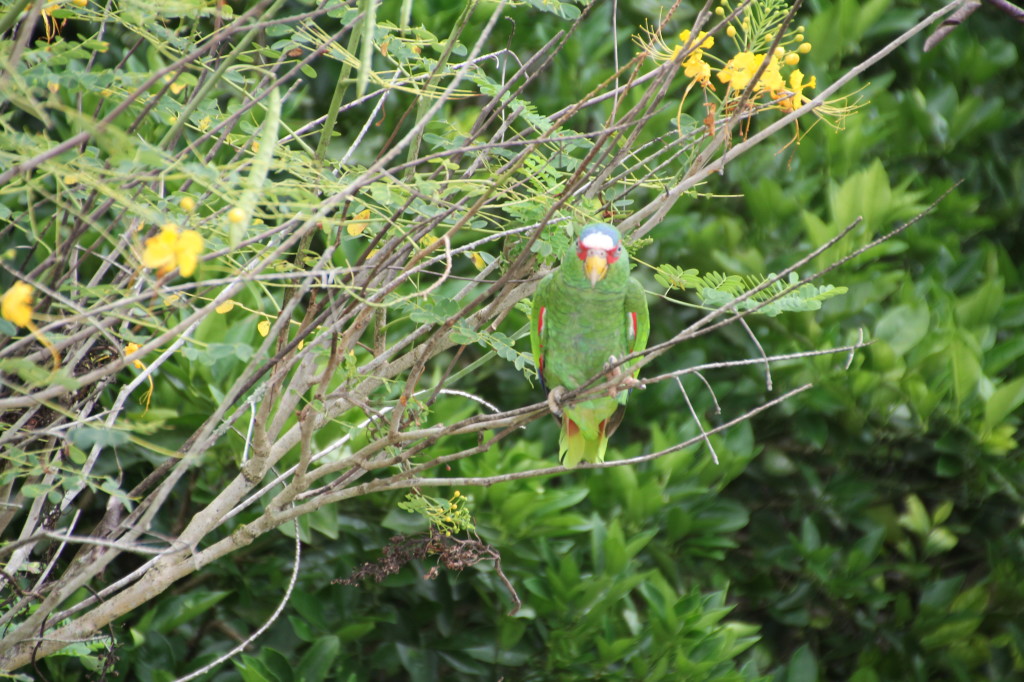 The White-fronted Amazon, at about 25 cm (10 in) long, is the smallest of the Amazon parrots. This species is named for the bright white patch of feathers on their foreheads, although the amount of white varies from individual to individual. They have mostly green plumage with some blue colouring on their outspread wings. They have bright red coloring around their eyes (in some individuals almost like spectacles) and blue coloring behind the patch of white on their foreheads.
The White-fronted Amazon, at about 25 cm (10 in) long, is the smallest of the Amazon parrots. This species is named for the bright white patch of feathers on their foreheads, although the amount of white varies from individual to individual. They have mostly green plumage with some blue colouring on their outspread wings. They have bright red coloring around their eyes (in some individuals almost like spectacles) and blue coloring behind the patch of white on their foreheads.
They can be found in a variety of wooded areas and open country with trees such as moist, seasonal semi-evergreen and deciduous forest, pine woodlands, gallery forest, ranchland with stands of open woodland, savanna and arid tropical scrub with cacti. Up to 1850m (6068 ft).
LEARN MORE ABOUT THIS PARROT
VIDEO
I had a hard time finding footage of this bird in the wild, this one is short but you can hear what they sound like.

